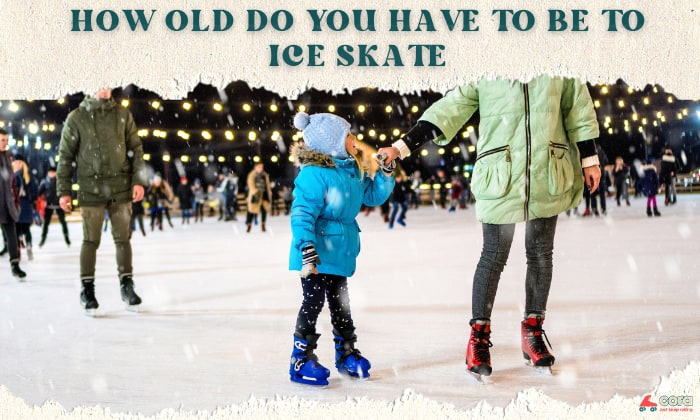When shopping for roller skates, whether that’s skates online or offline, you may be compelled to browse and select with the best brands in mind. However, it is also important to think about the types of skates. After all, options exist for different types of roller skating.
So, what are the different types of roller skates? Keep reading to learn the details of each type!
Page Contents
6 Different Types of Skating Shoes
1. Indoor Roller Skates
As you can guess, these skates are reserved for indoor surfaces, like rinks and courts. Essentially, they are regular roller skates with four small, hard, and light wheels.
- Small Wheels: Most of the time, indoor roller skates’ wheels run from 55 mm to 66 mm. The small size cuts down rolling time and allows wearers to turn and twist more swiftly.
- Hard Wheels: Indoor skating wheels are hard—their hardness rating typically ranges from 90A to 102A. They are not as great as soft wheels at absorbing shock and rebounding. But that’s alright, as their wearers are not likely to encounter obstacles while skating anyway.
- Light Wheels: Indoor roller skates are lightweight compared to other skate types. And so, they are especially great for beginners. They ease maneuvers and do not drain much effort from their wearers.
Pros:
- Allow for swift turns and twists
- Make maneuvering easier
- Take longer for fatigue to set in
Cons:
- Do not absorb shock well
- Lack rebounding capabilities
2. Outdoor Roller Skates
These are also traditional roller skates with four wheels. However, they are meant to be used outdoors. You can wear them recreationally at a skate park or as a means of transport for commuting or running errands.
These kinds of skates have large, soft, and heavy wheels, as well as slightly-forward plates to accommodate the rough terrains outdoors.
- Large Wheels: Bigger wheels are practical skates designed to overcome small obstacles, such as rocks, cracks, etc.
- Soft Wheels: Outdoor roller skates are fitted with softer wheels so they can absorb shock better. Usually, their hardness ratings are below 90A.
- Heavy Wheels: Skates for the outdoors are on the heavier side, meaning they’ll tire you out much faster and make maneuvering more challenging. As such, they are not ideal for newbies still trying to get used to moving on wheels.
- Forward Plates: The plate of outdoor roller skates can be placed further forward on the centerline in order for the wheels to stay grounded while traveling on rugged surfaces. This placement also makes turning and changing directions easier.
Pros:
- Absorb shock well
- Minimize impact
- Offer better rebound
- Make the skating experience smooth
Cons:
- Tire you out faster
- Make maneuvering trickier
3. Speed Skates
People tend to think of inline skates types when it comes to speed skating. However, there are also speed roller skates, which have four wheels and look a lot like normal shoes with their low-cut ankle boots and snug fits.
As with indoor and outdoor roller skates, these have rather self-explanatory skate names. Some people also call them speed quads. (“Quads” refer to the fact that they have four wheels).
To allow wearers to achieve high speeds, these types of skating shoes come with a lighter plate and less padding. Thanks to these features, users can skate longer and more vigorously without wearing themselves out.
Pros:
- Designed for skaters to go their fastest
- Provide flexibility and agility
- Take longer to wear the users out
Cons:
- Less padding, so the wearer may feel less comfortable
4. Jam Skates (Dancing Skates)
While seemingly similar to speed skates, this footwear is an entirely different type of skating. To be specific, these are designed for artistic expression and fancy footwork.
Jam skates have laceless boots that stop below the ankle and four fat, soft wheels. They are quite lightweight, despite having a toe plug. Together, these features let jam skaters comfortably and safely “jam” to cool disco music.
- Low-Cut Boot: The skates’ boots do not extend higher than the ankles. Thus, wearers can move more freely. However, this also means giving up ankle support.
- No Laces: This design means nothing will accidentally get tangled into the wheels. So, skaters can skate-dance without worrying.
- Fat, Soft Wheels: The size and softness of jam skates allow them to absorb shock and grip the surface that they are on, ensuring safety. But, in exchange, it is more challenging to do things like turn, spin, and pivot.
- Toe Plug: Sometimes also referred to as a “jam plug,” this makes it simpler to brake and pull to a standstill. It is especially handy in jam skating since wearers move to the beat.
Pros:
- Offer flexibility, agility, and mobility
- Ensure safety
- Provide comfort
Cons:
- Do not offer ankle support
- Make it tricky to turn, spin, and pivot
Read more: Jam Skates vs. Rhythm Skates comparison
5. Roller Derby Skates
These are designed for one of the most famous skating sports in the world: Roller Derby. Appearance-wise, they resemble speed and jam skates: Their boots stop under the ankles, providing flexibility, and they have a toe stop.
However, because roller derby is a contact sport, the skates have more paddings to offer wearers extra protection. Another difference is that they have both laces and Velcro straps for securing.
Many professional Roller Derby skaters have custom roller skates. But you do not have to be one to own a pair. Nowadays, plenty of top skate brands offer such options. You might have to shell out more money, though.
Pros:
- Provide flexibility
- Offer extra protection
- Fit snugly to your feet
Cons:
- Might provide less ankle support
6. Hockey Skates
Besides racing speed skates vs. regular skates and other types we have mentioned above, there are hockey skates that also come in four wheels. They are used for roller hockey, which also goes by the names rink hockey and quad hockey.
To support the different skate styles, these quads are distinctly designed: a mid-high-profile boot, a long tongue, and large, wide wheels.
- Mid-High-Profile Boot: This feature ensures that wearers get decent ankle protection without giving up the flexibility, agility, and mobility necessary for quickly making stops and changing directions.
- Long Tongue: Paired with the mid-high profile boot, this makes sure that the wearer’s feet are well-protected. In a game, it shields against tough hockey sticks and the puck.
- Large, Wide Wheels: The big size of the wheels makes them better at absorbing shock and offering stability. As such, hockey skaters can skim across the court smoothly, easily, and safely.
Pros:
- Offer ankle protection
- Ensure wearers’ safety
- Absorb shock well
Cons:
- Made for hockey, specifically
What Do the 6 Different Types of Roller Skates Have in Common?
- They all have four wheels. However, this is also a characteristic of inline skates/rollerblades. For more on roller skates vs. roller blades, check out our other blog posts.
- They are all available in many styles, so wearers can choose one that matches their tastes, preferences, etc.
- They are all available in many variations, age- and gender-wise. That means you can find skates for men, women, and children.
Conclusion
Now that you know the different types of roller skates and their key characteristics, you can decide on a suitable one for yourself.
Should you want a pair for non-specific skating, indoor or outdoor skates will work. If you are looking for one to dance in or pursue the thrill of speed, go with jam and speed skates, respectively. Consider Roller Derby skates and hockey skates if you play these sports.

Harrison is a skating enthusiast who picked up the sport during her student exchange years in Canada. She has been a skating coach for children and teens for 3 years and now holds classes as a freelancer. Harrison entwines her experience leading skating classes in the content published on Cora to help readers fall in love with skating, just like she did.















